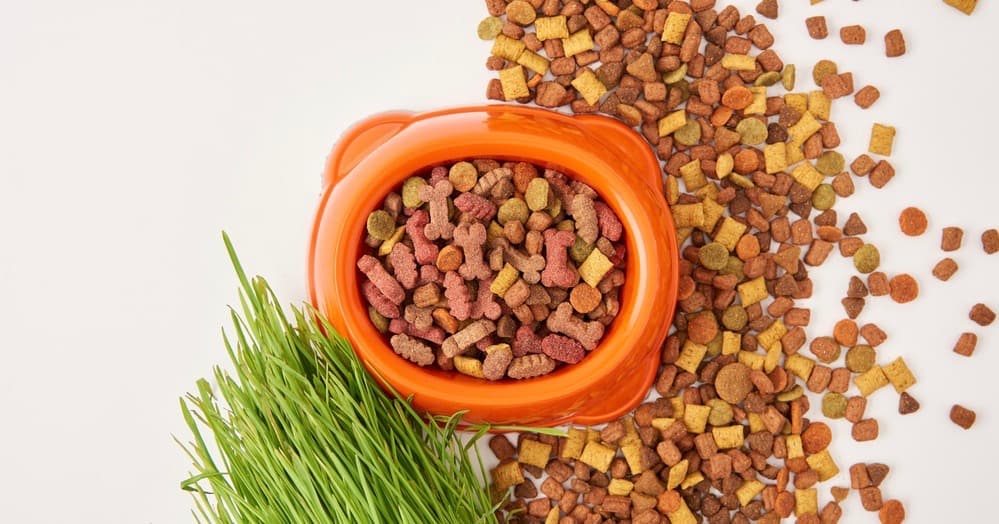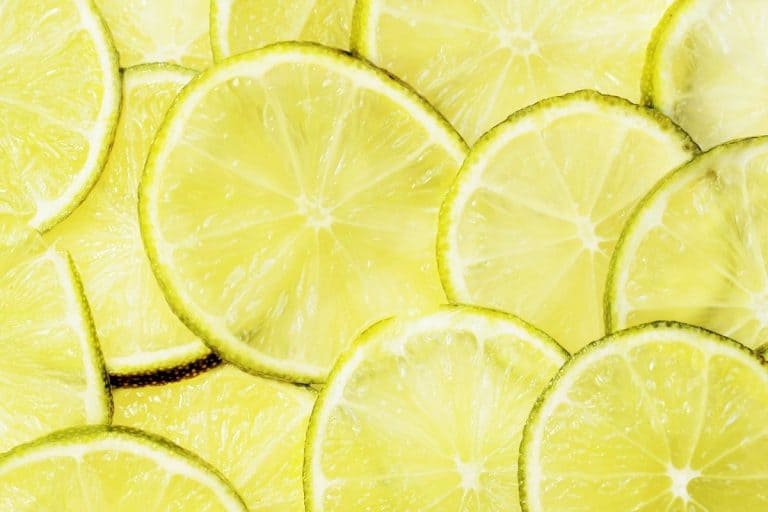How Much To Feed An Australian Shepherd Puppy? 2 Week – 4 Week – 6 Week – 8 Week Old Australian Shepherd Puppies
They’re cute, they’re fluffy, and they’re going to grow into energetic, smart, and highly trainable dogs. Australian Shepherd puppies aren’t always easy to find, so you’ll be especially pleased that you managed to find a puppy to adopt.
As a pet parent, you’re planning to give your pup the best upbringing you possibly can, and you’ll be committed to keeping him healthy so that you can enjoy your time together for longer.
Let’s take a closer look at what you need to do and the things you ought to know about the new member of your family. After all, we often end up wondering whether we’re doing the right thing when caring for our pets.
How much should I feed my Australian Shepherd puppy? Is he overweight? Is he developing as he should? We’ll answer these questions and more, so keep reading!
How Much Should An Australian Shepherd Puppy Eat?

This is a pretty tough question to answer without knowing what you’re feeding your pup and how old he is, but here are some general guidelines.
To begin with, find out what type of food your puppy was eating before. If you’re going to change that diet, the transition needs to be phased so that his digestive system doesn’t get a shock from a sudden change.
Gradually phase in the new food by making a mixture of 1 part new food to 3 parts of his previous food for a few days. If there’s no tummy upset, you can increase this to a half and half mix, again watching to see whether his stools remain firm.
Finally, you’ll only use 1 part of the previous food to 3 parts of the new one before completing the transition to the new brand.
Australian Shepherd Puppy Feeding Chart
Puppies need to be fed more frequently than older dogs, and “free feeding” or leaving a bowlful of food out for puppies to eat at will can lead to overeating. This Australian Shepherd puppy feeding chart indicates how much to feed them and when.
Remember that different dog food brands will vary in nutritional value, so you may have to adjust this guideline slightly based on your final choice of pet food.
When choosing a puppy food, opt for a brand that uses natural ingredients and a high-quality source of animal protein. Look out for additional supplements that will help your puppy’s growth and healthy development. Purchase a small pack to begin.
Not all puppies are the same, and what one pup loves, another may shun and what suits most puppies’ digestion may not agree with your pup’s constitution.
If your puppy refuses to eat or consistently has digestive issues like wind or loose or stools, choose a different option. Below, we review a few top brands to help you in making your selection, but first, let’s look at the changing needs of your growing puppy.
2 Week Old Australian Shepherd Puppy
At two weeks old, your pup should still be relying on his mom for food. Her milk provides everything he needs. However, at about 3 and a half weeks, you can start the weaning process.
Prior to this, it’s advisable to have a puppy milk formula on hand just in case something goes wrong with the mother. If you didn’t need to use it before three to four weeks of age, it will come in useful during the weaning process.

To help puppies with weaning, use a puppy milk formula to begin with. Provided the mommy dog is able to feed her young, she will continue to do so, but supplementing what she can offer will help to lower the demand on the mother and will begin the process of accustoming the pup to independent feeding.
4 Week Old Australian Shepherd Puppy
It’s time to begin weaning pups at this age. There’s no need to keep the mother away from her pups. Their developing teeth make suckling uncomfortable, and she’ll spend less and less time feeding them as a result.
In nature, mother dogs regurgitate food for their pups during weaning. Don’t be alarmed if your Australian Shepherd mom dog does this.
Once the pups start drinking the milk formula from the saucers you’re providing, it’s time to start adding food. Use crumbled puppy food and let it soak in the milk so that it’s soft. Over the next few days, you can reduce the formula and increase the solid food until your puppies are eating solids only.
Start with a ½ to ¾ cup of premium, nutrient-rich dog food daily or consult the packaging to obtain a recommended weight and weigh it out on your kitchen scale to ensure you’re getting the apportion size right.
6 Week Old Australian Shepherd Puppies
By 6 weeks of age, your pups should be weaned, but it’s better to leave them with their mother and siblings, for a week or two longer. Most authorities agree that seven to eight weeks is the best age for puppies to be adopted.
Meanwhile, you should follow the guidelines on our Australian Shepherd puppy feeding chart and feed your puppies four times daily – the routine that they will follow until they are about four months old when feeding frequency is ideally three times daily.
As a rough estimate, you will be feeding your weaned pup about one cupful of food (provided it’s a nutrient-rich brand) spread across meal times every day.
Do interact with puppies, introducing them to outsiders, and, if possible their future families to get them accustomed to social interaction outside of the litter and your immediate family circle.

8 Week Old Australian Shepherd Puppy
The time has come for your puppies to go to their forever homes. If they’re good pet owners, they’ll be ready to ask “How much to feed an Australian Shepherd puppy?” But they need more advice than that. Advise their new families as to which puppy food you have been using.
If they want to change brands, they will have to introduce the new food gradually with consideration for puppies’ sensitive digestion. Explain the process of changing foods to them and warn them to slow down or try a different food if stools are consistently loose during a diet change.
Feeding frequency will now be three times daily and the times should be routine, helping the pup to feel secure and accustoming him to a regular feeding routine. As a general rule of thumb, Australian Shepherd pups will now need around one and a half cups of a good-quality puppy food daily.
10 Week Old Australian Shepherd Puppy
Feeding volumes are increasing as the puppy grows bigger, but the three times daily frequency of feeds remains in place. Monitor your puppy’s appetite and watch that weight.
At this point, you can still use the 1.5 cups guideline meaning that each meal consists of about half a cup of puppy food when choosing the brands.
At this time, the most important thing in an Australian Shepherd puppy’s development is socializing. He’s active, curious, and eager to get to know people, other dogs, and the pets already present is in his new home.
While it’s important to remember that he’s still just a baby with a very short attention span, he is ready to lean fast.
Australian Shepherd pups tend to be “mouthy” liking to nip and chew what they love most – including their new family! It’s time to teach them bite inhibition, and they will learn easily at this age.
12 Week Old Australian Shepherd Puppy

The volume of food your puppy needs to maintain a healthy weight continues to increase, so be sure to follow guidelines and monitor your pup for any signs of being under or overweight.
Follow the directions for feeding carefully, and be particularly careful not to overfeed – yes, we know he’s cute, but being overweight isn’t healthy! Use package recommendations or try a guesstimate of 1.5 to 2 cups of puppy food daily depending on your pup’s size and overall condition.
Your pup still needs to be fed at least three times a day, and training should begin in earnest. Remember, Australian Shepherds love to work with their owners and will continue to do so throughout their adult lives too.
Meanwhile, don’t hesitate to contact your veterinarian if you are concerned about your puppy being too skinny or too fat despite following the correct feeding programme.
Best Dog Food For Australian Shepherd Puppies

#1. Blue Buffalo Life Protection Formula
Editor’s Choice
Blue Buffalo Life Protection Formula for puppies is our choice as the very best food for your Australian Shepherd puppy. It’s not just a question of how much to feed an Australian Shepherd puppy, but WHAT to feed it.
Pros:
This brand was formulated to be high in nutrition, low on empty calories, and gentle to the canine digestive system. It’s grain-free, uses real meat protein and contains plenty of vitamins and minerals to keep your pup in splendid condition.
Cons:
Other than the price, there’s not much to criticize here. Having said that, it’s worth remembering that you don’t have to give as much volume to get the same nutritional value as you’d get from a cheaper brand – and with the right start in life, your puppy will be less prone to health issues later on.
#2. Purina Pro Plan Puppy Shredded Blend
Runner-Up
Pros:
Most pups, even picky eaters, like this pet food and it does not include the artificial ingredients that we have learned to be wary of in pet foods. It is well-balanced and provides the nutrition a growing puppy needs. In addition, it’s a mainstream brand and fairly easy to find in most stores.
Cons:
Purina has not always had a good reputation for consistent quality in its pet foods and, although it is unclear whether this was due to a sudden change in pet food brands, there have been complaints about the food causing diarrhea.
#3. Wellness Complete Health Puppy
Pros:
Wellness Complete Puppy has all the ingredients like to see in a puppy food. It has the good nutritional balance, the protein is of natural origin, and it has the smaller kibble size that makes the dry chunks easy for pups to manage.
Cons:
Puppies with sensitive digestion may not be able to tolerate this food well. While some pups seem to love it and do well when eating it, there are reports of pups that, though transitioned gradually to this brand, still suffered from loose stools.
Although it may seem cheaper than our top selection, the nutrition is not as concentrated and puppies will need slightly larger portions which, in turn, makes it less of a saving than it seems on the surface.
#4. Purina One Smart Blend Healthy Puppy
Pros:
Purina has gone to some effort in producing an all-natural puppy food with a good nutritional balance and a range of supplements targeting healthy growth and development. The majority of people feeding their pups this diet are well-satisfied with the results.
Cons:
The product contains gluten which not all dogs tolerate well. There are also reports that some pups simply don’t like it and can’t be persuaded to eat it.
Beyond that, the 2015 pet food scandal in which Purina was implicated is still remembered by many pet owners, while reports indicate that there may be a lack of consistency in quality between batches.
#5. Natural Balance LID Grain Free Salmon and Sweet Potato
Pros:
On the surface, there is much to applaud in this brand of dog food. LID stands for “Limited Ingredient Diet” and the benefit of that is that fewer ingredients means fewer things that may not agree with sensitive puppy tummies.
Cons:
This pet food does not specifically target the puppy life stage, and although most pet owners are satisfied with it, some do not like the fishy odor of the kibble.
According to reviews, not all dogs like it either and there are critics who say that for a limited ingredient diet, the ingredients are still rather too numerous.
2 Month Old Australian Shepherd Puppy Weight
When considering puppy weight, do take genetic variation into account. Some pups are just bigger or smaller than the average. On average, an 8-week-old Australian Shepherd weighs around 10.5 pounds.
Males tend to be bigger and females are smaller, so take this into account. At this age, it’s a good idea to take your pup for vaccination, and you can ask your vet to evaluate its weight if you are concerned that your pup is over or underweight.

3 Month Old Australian Shepherd Puppy Weight
Puppies grow fast! By this time, your Australian Shepherd puppy should weigh between 18 and 25 pounds, once again, allowing for differences between males and females and some genetic variation within the breed itself.
Maintain a healthy weight by feeding your pup as recommended and continue to provide more frequent, smaller meals rather than giving it its daily allowance all at once or feeding twice a day.
4 Month Old Australian Shepherd Puppy Weight
By this time, your energetic Australian Shepherd pup should way between 23 and 32 pounds. You should still be feeding three to four times daily – it will take another two months before you can consider reducing feeding frequency to twice a day.
To maintain a healthy weight, and to take the edge off some of that boundless puppy energy, you should take your dogs for twice-daily walks. Added benefits of exercising and playing with your pup include opportunities for training and bonding with your dog.
How Much do Australian Shepherd Puppies Grow Each Week?
With so many variables to contend with, including your puppy’s genetic makeup, it’s hard to pin down an exact increase in weight on a week-by-week basis. A typical growth curve shows that Australian Shepherd pups grow rapidly until they are 5-6 months old with the growth curve becoming less steep after that.
By 11 to 14 months, the growth curve is flattening out, with only minor changes in weight on a month-to-month measurement. However, it’s safe to say that between the ages of 3 and 6 months, most Aussies double their weight before the growth curve begins to slow.
Switching From Australian Shepherd Puppy Food to Adult Food
Between the ages of 6 and 12 months you can make the change from puppy food to adult food. If you spay or neuter your pets, making the change at around that time makes sense. When switching to adult food, transition gradually as described in our process for altering a dog’s diet from one brand of food to another.

Introduce the new diet mixed into the old one and increase the percentage of new food in each serving over a period of 7 to 10 days. Look out for signs of tummy upsets and slow down the change process if you notice soft stools.
What If My Australian Shepherd Won’t Eat
Because loss of appetite is often the first sign of illness, it’s advisable to take your pet for a checkup at the vet’s office if he or she is refusing to eat. If your dog turns out to be in good health, it could be that the food you’re offering doesn’t suit him.
While it could be a simple case of fussiness, it’s also possible that the food doesn’t agree with him for other reasons. Ask your veterinarian how best to overcome the problem, introducing a new diet if this seems to be necessary.
What Nutrients Does an Australian Shepherd Puppy Need?
Protein is top of the list when it comes to puppy nutrition requirements. They’re growing fast and they need proteins to build up their bodies. As a guideline, the Association of American Feed Control Officials recommends a 22 percent protein content in puppy food.
Pups get most of their energy from fat, and don’t really need carbohydrates. Since Aussies are so energetic, relatively high fat content will help to fuel their activity.
However, the things pups need less of are just as important. For example, the full spectrum of vitamins and minerals are essential for optimum health. That’s why feeding a home-made diet can be so difficult. Getting the balance just right isn’t as easy as it may look.
Should You Feed an Australian Shepherd Puppy Supplements?
A high-quality commercial dog food should contain all the ingredients your puppy needs, and more is not necessarily better. So, in general, the answer to this question is a “no,” unless your veterinarian recommends supplementation to help overcome a specific health-related issue.
If you are trying out a home-made diet, on the other hand, you may well have to give supplements to ensure that your pup is getting adequate nutrition. As previously mentioned, balancing a puppy’s diet using home-made food is something of a science, and unless you have a lot of time on your hands and the help of a veterinarian, it is not recommended.
How Much Water Should an Australian Shepherd Puppy Drink?

Unlike food, water should never be rationed out. Ensure that your pup has constant access to fresh, clean drinking water. The amount he or she needs will depend on how active the pup has been and how hot or cold the weather is.
If you like taking your pup out for long walks or runs, be careful about overtaxing him. Too much exercise can be as bad or worse than lack of exercise. Take water along to ensure that your canine friend doesn’t get dehydrated.
How Much Exercise Does an Australian Shepherd Puppy Need A Day?
Australian Shepherds are active and intelligent dogs, so both body and mind need exercise. Make sure there’s lots of room for your pup to run and play. Walks for your puppy will help accustom him to the leash, but beware of overtaxing young pups. As a basic guideline, walk your puppy for 5 minutes per month of age twice daily.
A well-trained dog is able to coexist well with his family, their visitors, and other pets, and the mental stimulation will give your pup a sense of purpose. Keep training positive and don’t expect too much too soon.
As working dogs, Australian shepherds need some kind of “job” and they derive satisfaction from working with their owners.
Your Australian Shepherd will be a wonderful companion for many years – provide you pay attention to his needs – particularly during the months of his puppyhood.






